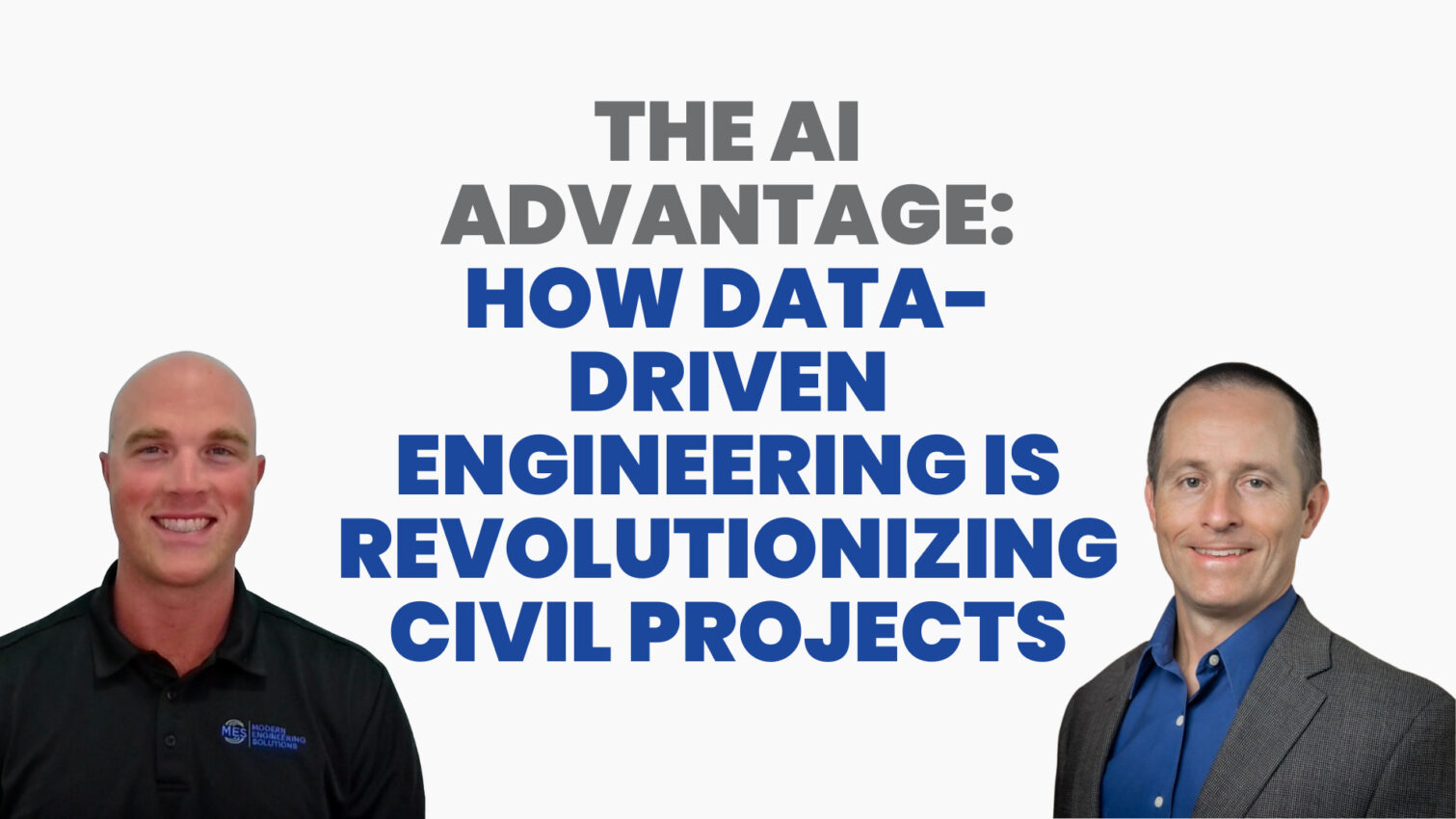The AI Advantage: How Data-Driven Engineering is Revolutionizing Civil Projects

In this episode 11 of “Revolutionizing Infrastructure Management with AI” from Engineering for Communities Live Show, we dive into Matt’s journey of incorporating AI into infrastructure management and explore the pivotal moments that sparked his interest in this innovative technology. We’ll uncover the lessons he learned along the way and discover the real-world applications of AI in tackling complex challenges faced by civil engineers.
From streamlining workflow processes to optimizing risk management and capital planning, AI has the potential to revolutionize the way we design, build, and maintain critical infrastructure. Matt’s expertise and firsthand experience shed light on the practical implementation of AI in engineering practices, offering valuable insights and tangible examples of its impact.
As an overview here are the top 3 ways Matt Stahl is changing the Engineering:
- Lesson #1: How Civil Engineers Leverage ChatGPT to Streamline the Workflow
- Lesson: #2: How AI is Transforming Capital Plan Formulation and Risk Management
- Lesson #3: Artificial Intelligence (AI) Meets AutoCAD: A Smarter Shift in Design
Lesson #1: How Civil Engineers Leverage ChatGPT to Streamline the Workflow:
In this engaging conversation between ‘Big Mike‘ and Matt Stahl, the primary focus revolves around the application of AI and its impact on their respective fields. Mike explains how AI, like ChatGPT, provides a substantial amount of groundwoark while not necessarily completing the task entirely. It’s likened to having an assistant fresh out of school – highly beneficial, but not a complete substitute for an expert’s final touch.
Matt affirms this, suggesting that the best role for AI currently is to deliver that initial list or baseline, thereby saving the time of the experts for more intricate steps further down the workflow. This initial heavy lifting can be offloaded to AI, allowing it to work tirelessly, even overnight or during weekends.
Mike further proposes that ChatGPT can be seen as a tool that elevates the capability of a C-level student to a B-level, or as a time-saving device for an expert user, like a Professional Engineer (PE).
Matt sees potential in this, acknowledging that AI might reduce the team size required for certain tasks. However, he emphasizes that its primary benefit is in the efficient processing of large data sets, something humans may find challenging.
AI, particularly machine learning models, can handle thousands of attributes and scenarios, providing insights that even experts might overlook. In conclusion, the conversation posits AI as an effective tool for laying groundwork and handling vast amounts of data, though it doesn’t replace the need for human expertise.
Lesson: #2: How AI is Transforming Capital Plan Formulation and Risk Management
In the conversation, Big Mike was curious about the application of AI in various facets of asset management beyond the risk component. Specifically, he is interested in how AI can optimize the numerous layers involved in asset management that might typically be managed via an Excel spreadsheet.
Matt Stahl responds, agreeing that AI’s biggest application is indeed in assessing the likelihood of failure or risk management, given its capability to process large datasets.
He goes on to illuminate another valuable application of AI, whyesich is inspecting assets that are challenging or costly to assess traditionally. For example, for roads, physical inspection for PCI (Pavement Condition Index) scores is relatively simple, but some assets are not as straightforward to evaluate. AI is particularly effective where gathering data would be difficult.
Furthermore, Matt Stahl proposes that AI’s role at the planning level is crucial, particularly when data collection is challenging. Examples such as these illustrate AI’s potential to augment and enhance traditional engineering workflows, aiding in everything from road maintenance to capital planning.
Lesson #3: Artificial Intelligence (AI) Meets AutoCAD: A Smarter Shift in Design
The conversation between Big Mike and Matt Stahl explores the integration of AI into traditional engineering processes. Big Mike presents a scenario where a tool like AutoCAD can create efficiency, but also run the risk of causing time wastage. He emphasizes the need to balance AI usage and prevent it from turning a two-hour task into a ten-hour one.
Matt Stahl responds by agreeing that while the excitement for AI is justified, it’s crucial to have the right data before thinking about its application. He proposes conducting a data audit to understand what data they have and what they’re missing.
He uses the recent EPA’s lead copper pipe rule as an example, emphasizing that while AI could aid with the initial inventory, data collection should be part of normal operations.
Stahl further suggests that good data could be collected via existing staff and workflows, provided they’re given the right framework. He also states the importance of starting data collection early for future predictive modeling. The conversation demonstrates the blend of excitement and caution in the adoption of AI in engineering.
About Engineers for Communities
We are here to allow smaller disadvantaged communities in Colorado, Texas, and other states to connect on topics such as water, wastewater, city project planning, government funding, and everything in between.
On the LIVE Engineers for Communities show, you’ll learn the hard-fought lessons from the front lines earned by various community leaders who have already had their teeth bashed in and lived to talk about it. We’ll share the tips, tricks, mindsets, and frameworks that allow great communities to preserve. Register to attend the live show, ask questions, and level up. It’s every selected Thursday starting at 12:00PM MT.
